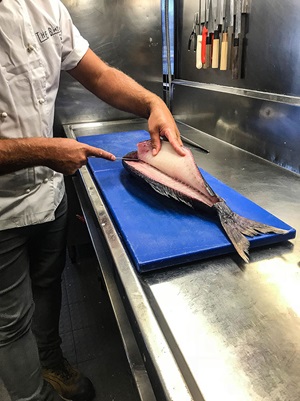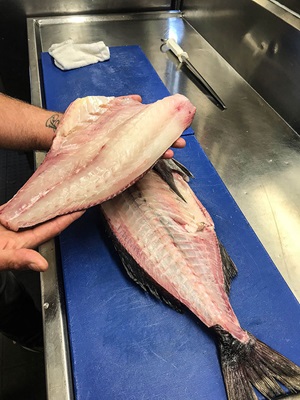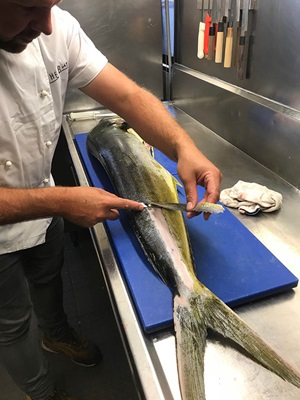Rising demand for high-quality product includes a focus on processing and preparation techniques to optimise flavour, shelf life and handling
By Andrew Cooke




Given that fish spend their entire lives in water, it may come as a surprise that they can be badly affected by the same substance – particularly the chlorinated variety – when they are being prepared for dining tables.
Most Australian fish are processed using fresh water at some point, and there is an inherent cost in that.
"Fundamentally, fresh water is the antichrist to fish quality during processing,” says seafood marketing consultant and industry adviser John Susman. “It removes the oils that produce much of the flavour, it affects the texture and it shortens the shelf life of the fish.
In the industrial process, wet processing is easier, quicker and more efficient. But chefs these days are looking for a higher quality product, so there is a renaissance in commitment to dry processing. It is more time consuming, but it results in a better quality eating product.
Dry filleting is effectively the butchery of fish without the presence of water. It’s obviously a fairly messy process – there’s scales, guts and gills – so it requires a bigger commitment to the process.
While some processing factories use salt water to help minimise the problem, this is not always possible. “In any processing plant you will generally see fish and fillets floating in fresh water"; John Susman says. “That means there is water uptake by the fish and there are temperature changes. And seafood is so fragile that this can really shorten the shelf life.”
Tony Wearne, a buyer at Sydney wholesaler Nicholas Seafood Traders, says about 80 per cent of his company’s product is wet filleted – primarily because it is easier and quicker. “But we also have a sashimi bar and our own restaurants, and all of the fish for those is dry filleted,” he says.
“It really depends where the product is going. There are people who are processing bulk amounts of fish who do all wet filleting; then there are niche wholesalers who supply top-end restaurants and they only do dry filleting.
“The dry process takes a lot longer because you have to wipe the fish down with paper towels and you have to clean surfaces and equipment without water. This means that there will be a cost difference between the two processes, simply because of the time that dry processing takes. It can take up to twice as long in some instances.”
The executive chef at leading Sydney seafood restaurant The Boathouse on Blackwattle Bay, Colin Barker, says longer shelf life is one of the main reasons that all fish are dry filleted in-house. “We keep chlorinated tap water well away from our fish, and it can last seven to nine days in our static fridge, which hovers around 0.5°C, with no deterioration in skin or flesh quality. Wet processing severely reduces that.
“Also, dry-filleted fish behaves better in the pan. If you are cooking skin-on Barramundi, for example, and you have eliminated water from the start of the process, it is easier to handle and you end up with a crisper, drier final product.”
Colin Barker says most suppliers provide dry-filleted fish on request. “But we have hinged our reputation on dry-filleted fish and we take it very seriously, so we do it all ourselves. Recently, more people in the restaurant industry have started receiving or preparing dry-filleted fish and it was a real ‘wow’ moment for them. Customers are becoming much more aware of it too.”
Colin Barker says the degree of quality deterioration after contact with fresh or chlorinated water varies between species.“Fish with higher oil content – the salmonids, for example – react more to water than others. As soon as they come into contact with chlorine it dramatically shortens the shelf life.
Photos: Boathouse on Blackwattle Bay executive chef Colin Barker prepares fish using dry-filleting techniques in the kitchen at his Sydney seafood restaurant. All fish at the Boathouse are dry-filleted, Colin says, because they then have a much longer shelf life and respond better to cooking processes. (courtesy Colin Barker)





